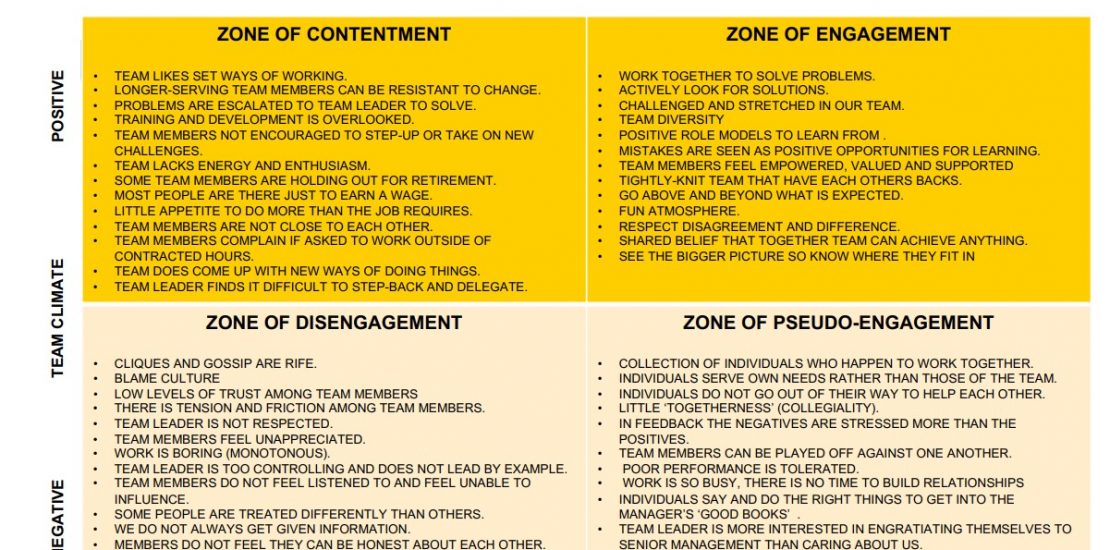- March 27, 2019

A recent article published on the BBC really caught my eye. Something I had witnessed consistently during my career as a management consultant but had not had the lexicon (or the data) to articulate.
The article focused on a productivity study by Ashridge at Hult International Business School of employees in a wide range of industries. The study categorised teams into 4 ‘zones’ – contentment, engagement, disengagement and pseudo-engagement.
The study encompassed all types of workers, and found some very motivated and others highly disgruntled – as you would expect.
However, about 20% of teams were a bit of a mystery – staff appeared to be very engaged but productivity and teamwork was low. These teams were termed ‘pseudo-engaged’.
The study found when “lifting the lid” on these groups of workers, that they were undermined by staff who succeeded in looking and acting busy, but weren’t actually getting anything done in a productive way.
It seems that many of these teams had people who were “gaming the system” by managing upwards. Characteristics of these teams included a tolerance of under-performance and team leaders who are more interested in managing upwards than developing their team members. The report emphasises the importance of first line supervisory level management (Team Leaders) as the ‘makers or breakers’ of engagement.
This research supports previous research that effective leadership is one of ‘the strongest predictors of engagement’.
Creating a Management Operating System that challenges Team Leaders to strive for continuous improvement is a proven way to build a culture of engagement and productivity.
Do you know who the pseudo-engaged are in your organisation? Do you have a system that can be gamed? Which zone do your teams fit into?
